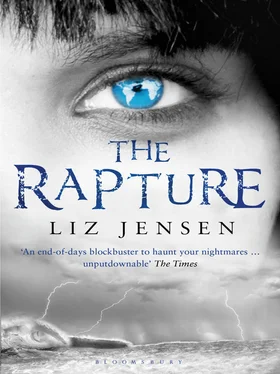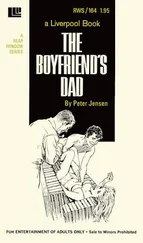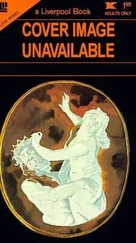Nothing. In place of an explanation, however grotesque, there is a void.
Without a word to Bethany, because I am unable to speak, I swivel round and roll out at high speed, a ball of revulsion trapped in my throat.
That night, at home, I turn on the TV and they are showing it again, and again and again because they know from experience that we can never get our fill, that it cannot become real until every detail has been absorbed and digested and processed and re-imagined. And sure enough, the swell of chatter in the wake of Christ’s epic fall has burgeoned into an international, interfaith Babel of opinion and emotion. There are weather experts, structural engineers, geophysicists, stonemasons, religious leaders, psychologists and even a conceptual artist dissecting the event. It’s established that soapstone, from which the statue was made, is highly weather-resistant, and unlikely to give in to strong winds, even at massive accelerations. But an engineer argues that if the base had been hit by a heavy object — not impossible given the colossal amount of debris sucked into the sky — then the statue could have become dislodged, balancing only by force of its weight. ‘Just look at where the statue stood: you can’t get much more exposed than on a mountain-top. Winds at that speed, and at that height…’ Another expert weighs in: it was not an accident waiting to happen, but ‘a freak convergence of weather and structural physics’. The net is buzzing with conspiracy theories. Christ’s fall was caused by a remotely triggered mini-bomb, part of a ‘9/11-style Jewish plot’. No, it was executed by Muslims on a hate mission. It was Iran’s revenge. Clashing opinions and interpretations vie for dominance in an atmosphere of excitement tipping into mass panic. The statue was slammed into by a flying object. It wasn’t struck by anything: it had merely eroded more than anyone realised. The Brazilian government knew this but covered it up. It was in extraordinarily good condition. No velocity of wind could wreak that damage on an object weighing a thousand tonnes. A toddler could have felled it with a single swipe.
Depressingly, the ‘fall of the Redeemer’ debate gathers momentum, obliterating the hurricane story. A radical Islamist cleric has claimed it’s ‘the judgment of Allah’, which has set a predictable chain of events — outcry, counter-attack, death threats — in motion. Anti-Muslim rioting flares across the world, countered by anti-Christian demonstrations and the burning of crosses: a war of ideologies, sparked by a falling chunk of stone. There are arguments about the dangers of iconography, the dangers of religion, the dangers of literalism, the dangers of scaremongering. Again and again, along with millions, I watch the fall of Christ, mesmerised.
But slowly, as the hours pass, sanity creeps back and the statue’s fall — which killed no one — is finally put in the context of the wider destruction the weather has caused. By the time Hurricane Stella concludes its two-day rampage, conservative estimates say that it has wiped out four thousand lives in Rio de Janeiro. The aerial images show hectare upon hectare of residential suburbs, of industrial estates and sprawling favelas laid waste, littered with slowly drying debris, corpses and rubble. The disaster relief agencies pour aid in, doing their utmost to prevent the spread of disease. But already, there are reports of typhoid. These are images I cannot bear. But I know that Bethany will be watching, chewing her green gum, soaking up the horror like a sunbather who can’t catch enough rays.
When I eventually get through to Frazer Melville he assures me that Hurricane Stella hitting Rio on the date Bethany predicted is, to use the jargon, ‘statistically insignificant’. Meteorology, he insists eloquently, is a notoriously inexact science, and much of it is simply guesswork. There are plenty of freak forecasts on the internet: Bethany could well have been trawling those. It’s easy enough to be taken unawares — as many were with Stella. But it’s just as easy to say you knew it was coming.
‘It’s like trying to second-guess a bucking bronco. Bethany got lucky, that’s all.’
‘If lucky’s the word. But what about your phone call? You sounded excited.’
‘Coincidences are exciting. So exciting I had to wake someone up at an ungodly hour. You were the obvious person. For which my apologies.’
‘A thousand to one, you said,’ I persist. ‘Is that statistically insignificant too?’
He sounds unfazed. ‘The good news is, I owe you dinner.’
Three evenings later Bethany’s sky-diver drawing, which I have ripped down from the wall of the art studio, lies in a folder at my feet in La Brasserie des Arts. I hate to eat alone only marginally less than I hate to microwave ready-meals or order takeaways. But by now I know the staff at La Brasserie well enough to have a favourite table, and to be greeted personally by the manager. Who smiles at me encouragingly when he hears that tonight, for once, I will have company other than Psychiatry Today.
When Frazer Melville arrives he kisses me on both cheeks and apologises for being seven and a half minutes late.
‘Remind me of the statistics of this not happening?’
‘Me being late? Very low.’ His joviality masks an edginess.
‘The hurricane.’
‘I said a thousand to one. But actually it was more like three.’
‘So you owe me two more dinners.’ While he fumbles his jacket off I pull out Bethany’s drawing and place it on the table in front of him. ‘Can you factor this into the calculations? She showed me this a week before the fall of the Rio Christ.’
I have written the date she drew it at the bottom of the page. I watch Frazer Melville absorb the image. The eye always travels left to right and top to bottom — the way Chinese hieroglyphs are drawn. He takes it in three times before speaking.
‘Noteworthy,’ he says finally. But offers no more.
‘It makes me feel less sure that it’s just coincidence,’ I say. ‘I mean, she would argue that she predicted this. And that she’s foreseen other things too. There was an earthquake in Nepal she claims she told me about in advance.’
‘And did she?’
‘She may well have done. I was listening for other things. But when I saw the Rio Christ falling on TV, the connection to this image was obvious.’ He says nothing. His eyes flit across the drawing again. We order our food and then there is another silence. Frazer Melville keeps glancing at Bethany’s drawing propped against the salt cellar. I can see it’s irking him.
‘I’d like to look at her notebooks, if I may,’ he says finally. ‘Out of interest. Check what else she’s seen in these so-called visions, and see if they correspond to anything.’
‘Infringement of patients’ rights: I’d lose my job.’
‘If anyone found out,’ he says matter-of-factly. ‘But they don’t need to.’
I feel a flash of anger. Does he really think it’s that simple? Logistically, it would be easily managed, especially with a wheelchair which already conceals an illicit thunder egg and an even more illicit spray-can: he’s right about that. But there’s a moral issue.
‘Are you familiar with a notion which we call human rights?’
‘Would she mind?’ he asks.
‘She’d think it was Christmas. But I’m more curious about your reaction. On the one hand the scientist says it’s just a coincidence — an exciting coincidence, and on the other—’
‘The scientist would like to know if there have been any others. Nothing unusual in that.’
‘How many would you need to see, before you stopped thinking they were coincidences? How many correct prophecies does this kid have to make before it goes beyond ‘noteworthy’? One more? Two? I mean, if she did turn out to be right about Nepal — which I could check ’
Читать дальше












